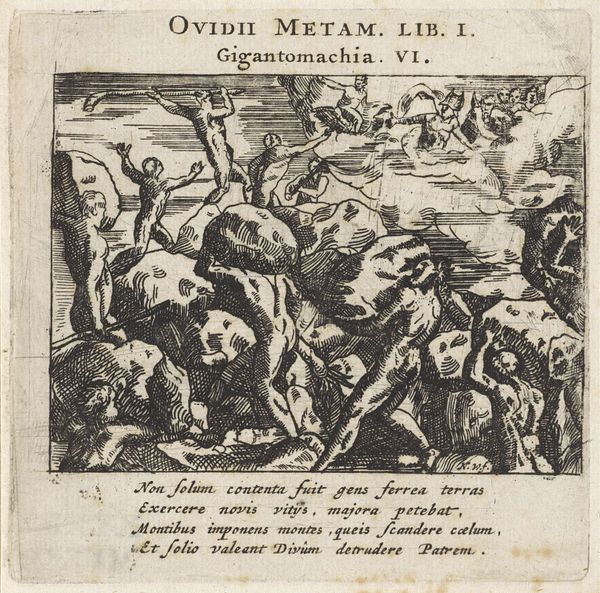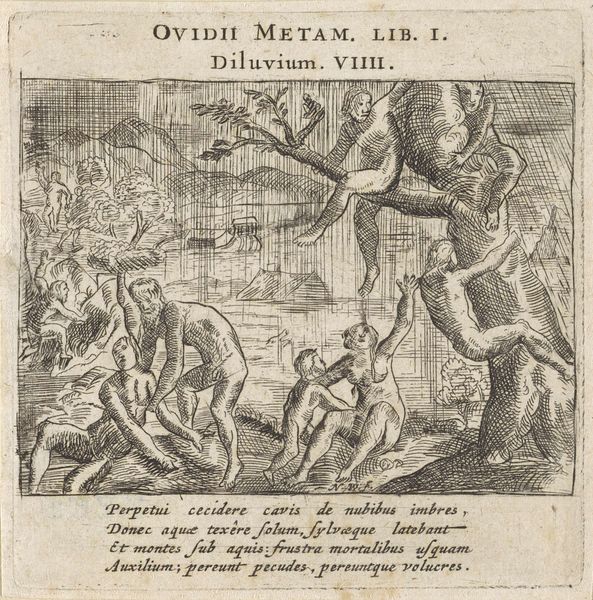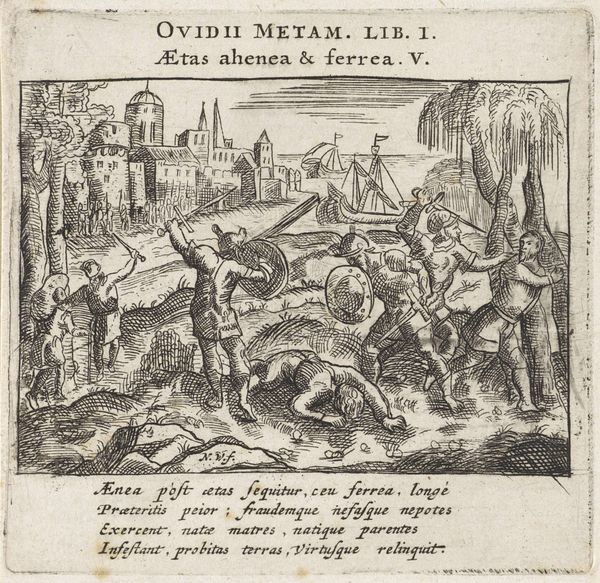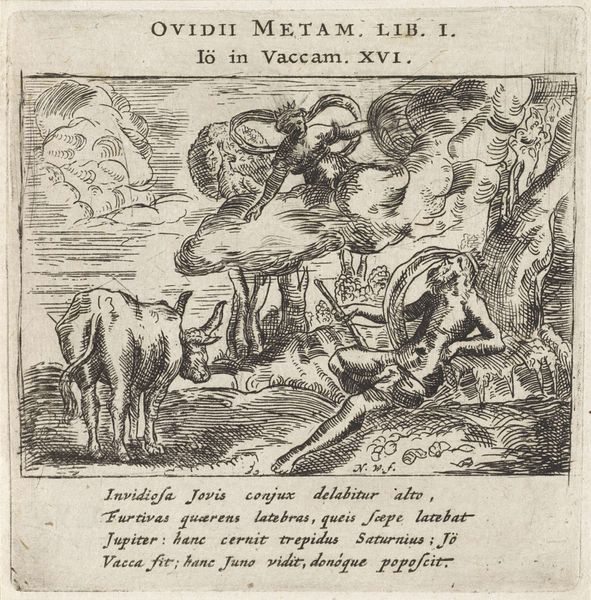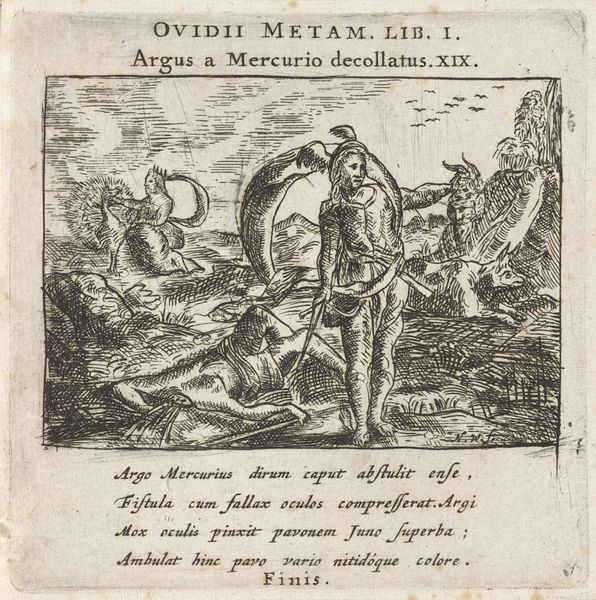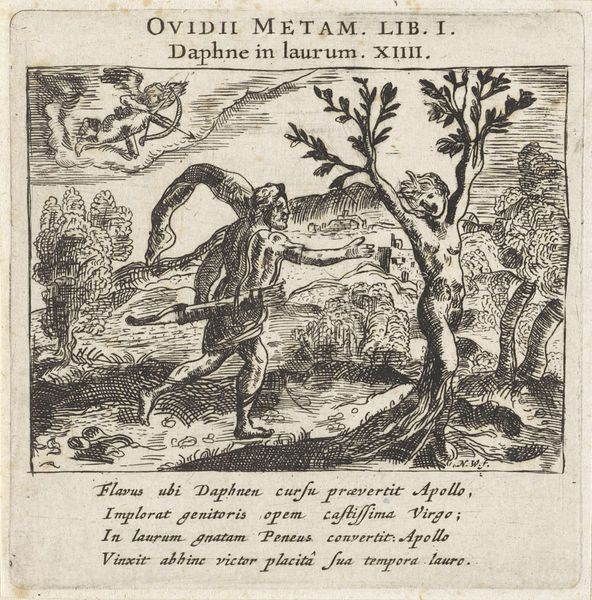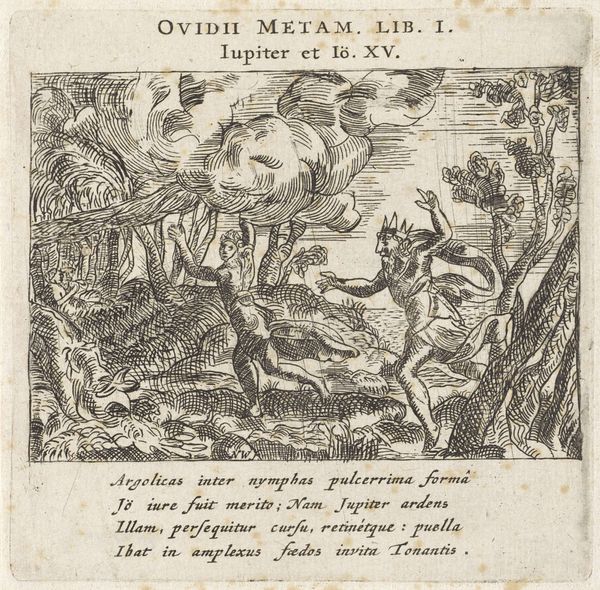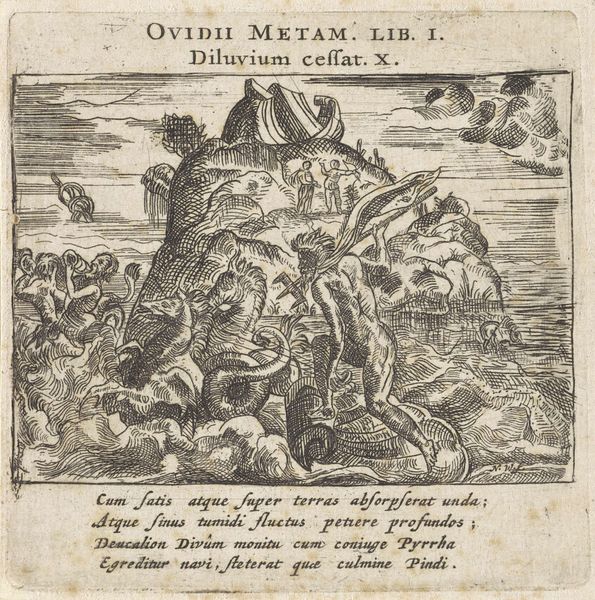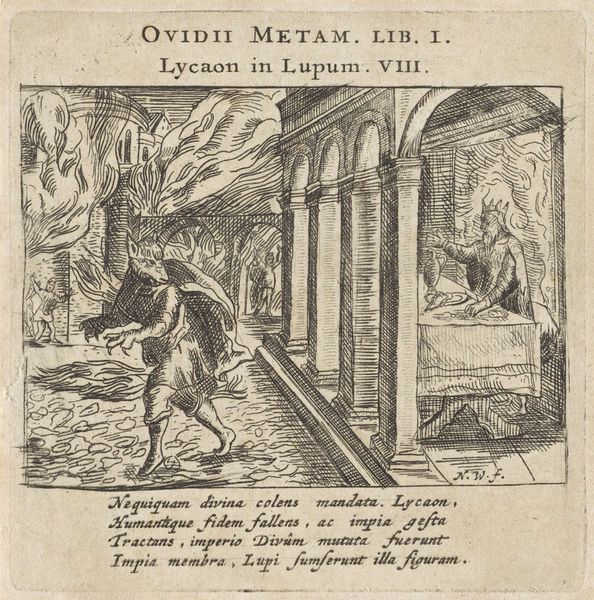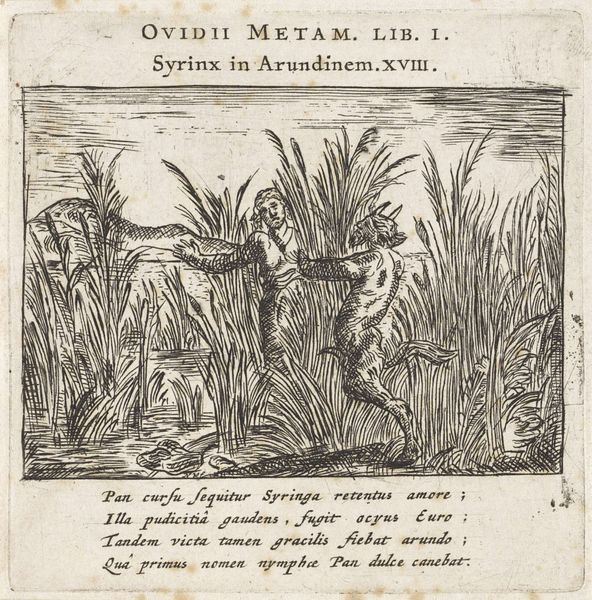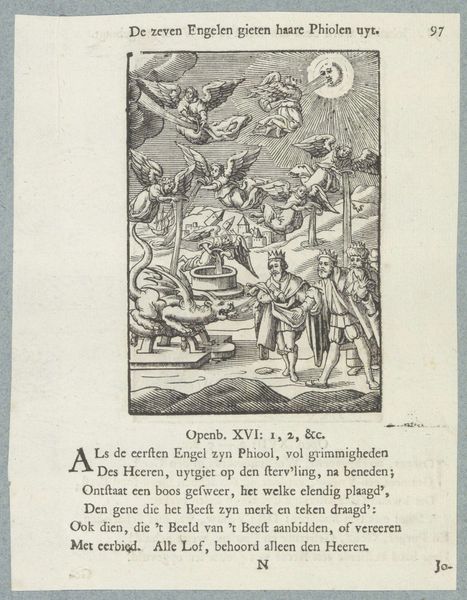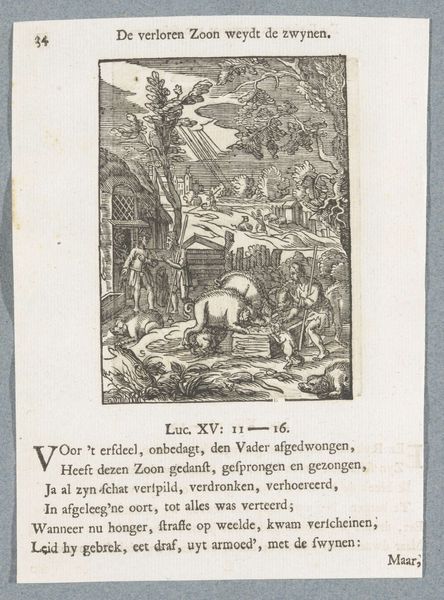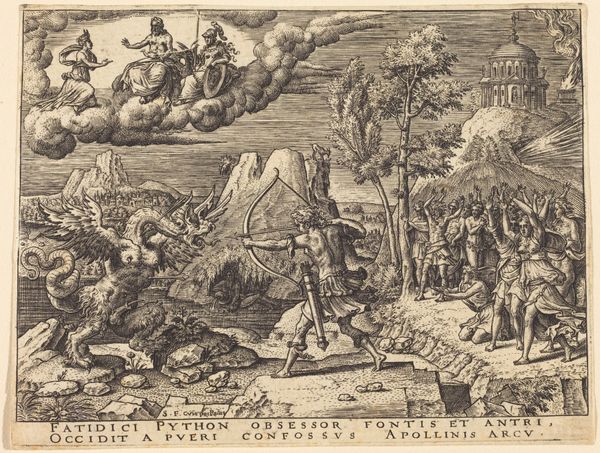
print, engraving
#
baroque
# print
#
figuration
#
mythology
#
line
#
history-painting
#
engraving
Dimensions: height 88 mm, width 88 mm
Copyright: Rijks Museum: Open Domain
Curator: Today we're looking at Nicolaes Cornelisz. Witsen's engraving, "Mercurius en Argus," created around 1659. It resides here at the Rijksmuseum. Editor: My first impression is a stark, almost unsettling drama. The density of line work creates a palpable tension. Curator: It's a representation of a story from Ovid's "Metamorphoses," depicting Mercury, sent by Jupiter, about to slay Argus, who has been tasked by Juno to guard Io, transformed into a heifer. This print, intended for distribution, was part of a broader effort to educate the populace with these well known stories. Editor: You can definitely see the focus is less on beauty, and more on relaying information. Still, the hatching used to define the musculature of Mercury gives him this vibrant energy even while attempting this clandestine killing. What do you make of the composition itself? The artist almost crams everyone into one scene. Curator: Absolutely. The image would have had a life of its own being part of a book. What Witsen achieves here is something quite clever when you consider how accessible this image would be across many households. The density reflects a desire for detailed storytelling. We can read in the text at the bottom that Saturnia entrusted the cow to Argus. This builds a rich dialogue between the image and its audiences, and the broader socio-political context is that stories and texts would be widely spread and would have acted as a form of social glue in this time period. Editor: I notice how the linear quality almost flattens the figures. Everything's pressed forward. Yet, paradoxically, the detail—the individual hairs, the meticulous rendering of the animals, of even the leaves overhead — provides a rich visual texture, in tension with the flattened depth. It lends a strange kind of depth despite it being such a shallow picture. Curator: That linear quality definitely ties into the Baroque aesthetic, emphasizing clarity for narrative impact in an era marked by profound social shifts and power struggles, with artwork as a tool for social discourse and didacticism. This one is much more graphic. Editor: It's true; there's an immediacy to the stark contrasts that captures something primal. Ultimately, both the density and linearity adds to a compelling visual storytelling experience.
Comments
No comments
Be the first to comment and join the conversation on the ultimate creative platform.
